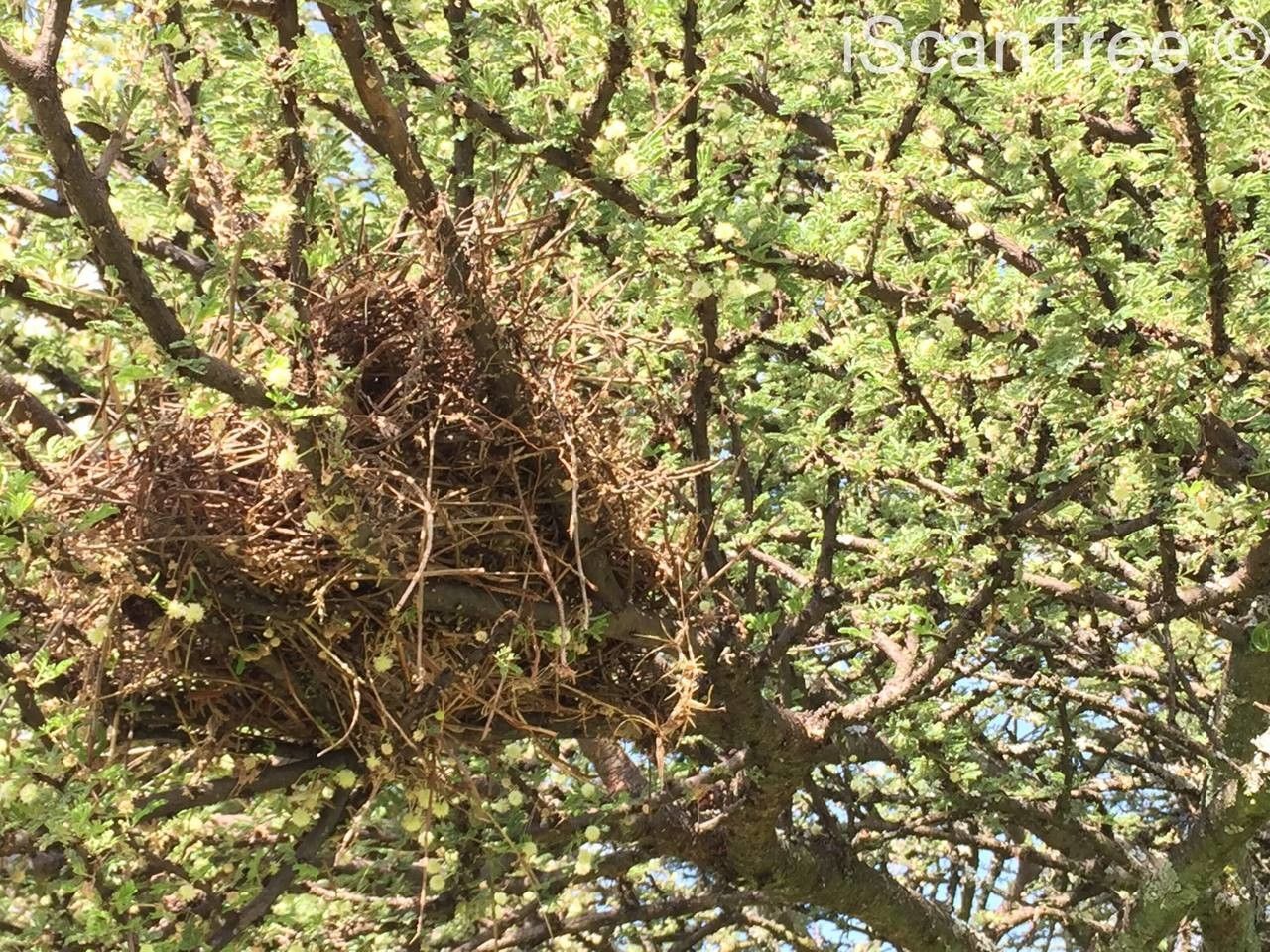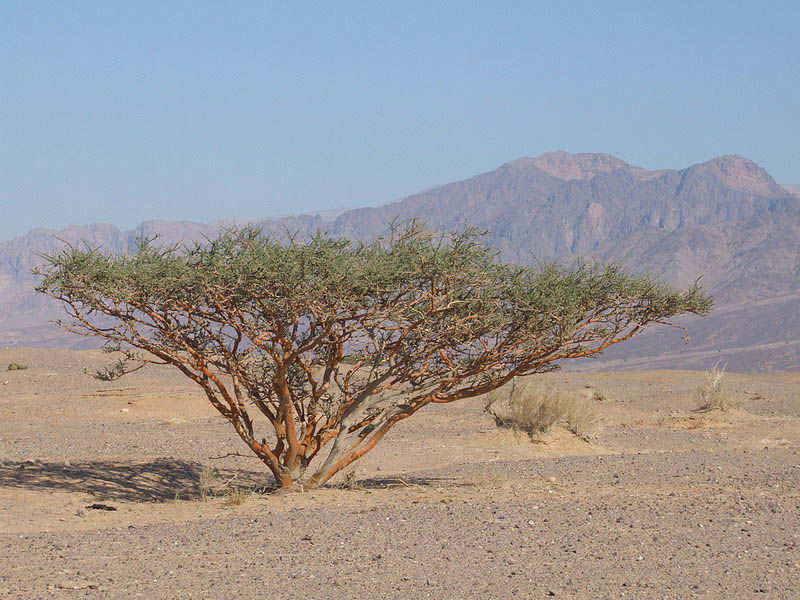Umbrella Thorn Acacia
vachellia tortilis
Also known as: ["Umbrella Thorn","Camel Thorn","Gazelle Thorn"]
Overview
A drought-tolerant, thorny tree native to African and Arabian deserts, known for its distinctive umbrella-like canopy.
Benefits & Perks
["drought tolerant","shade tolerant","wildlife attractant (bees, butterflies, birds)"]
Botanical Classification
| Phylum: | Magnoliophyta |
| Class: | Magnoliopsida |
| Order: | Fabales |
| Family: | Fabaceae |
| Genus: | Vachellia |
| Botanical Name: | Vachellia tortilis |
Plant Characteristics
Basic Information
- Category: Trees
- Suitable Location: outdoor garden in arid or semi-arid regions
- Suitable For:
- Is Weed: No
- Allergenicity: low
Environmental Needs
- Climate: {"temperatureRange":"0–50°C"}
- Hardiness: {"zones":"9–11"}
- Misting: rarely required
- Drainage: Fast-draining to prevent root rot.
- Soil Type: Well-draining, sandy or loamy soil with low organic matter; mimics natural arid conditions.
Maintenance Level
- Maintenance Level: very low
- Toughness Level: very high
- Pruning Frequency: Annually in late winter or early spring; light pruning can be done as needed year-round.
- Pruning Intensity: Moderate; remove up to one-third of growth if necessary, but avoid heavy pruning on young plants.
Care Details
Ideal Sunlight Coverage:
Full sun (6–8 hours of direct sunlight daily); tolerates intense desert sun but benefits from partial shade in extreme heat.
Sunlight Tolerance Tips:
Acclimate plants gradually to intense sunlight; protect from harsh midday sun in summer; ensure proper ventilation if grown indoors.
Care Requirements
Care Difficulty
moderatemoderate
Sunlight
full sun
Use reflective mulch to reduce soil temperature; rotate plant for even light exposure; avoid sudden light changes.
Watering
every 2–4 weeks in summer, every 6–8 weeks in winter
Water thoroughly until runoff, ensure excellent drainage, and avoid frequent shallow watering.
Soil
well-drained, sandy or loamy soil
pH: Slightly acidic to neutral (pH 6.0–7.5).
Avoid heavy clay soils; ensure pots have drainage holes; topdress with gravel for extra drainage.
Temperature
Thrives in hot, arid climates (20–40°C); tolerates temperatures down to 0°C but prefers warmth.
Monitor soil temperature; adjust watering based on heat; protect from sudden temperature drops.
Fertilizing
rarely required, annually in spring with a balanced, slow-release fertilizer
Fertilize only during active growth; avoid over-fertilizing; flush soil occasionally to prevent salt buildup.
Propagation
Methods
Stem cuttings or seed; cuttings root more reliably but seeds are viable if scarified.
Step-by-Step Propagation Guide
- Take 4–6 inch cuttings.
- Remove lower leaves.
- Dip in rooting hormone.
- Plant in medium.
- Keep moist and warm.
Best Time: Spring or early summer when temperatures are warm and humidity is moderate.
Environment
Warm (20–25°C), humid (60–70%), and bright but indirect light; protect from direct sun.
Medium
Well-draining mix of sand, perlite, and cactus soil; add rooting hormone for cuttings.
Hormone
Recommended for cuttings to improve rooting success.
Timeline
Cuttings root in 4–8 weeks; seed germination takes 2–6 weeks under ideal conditions.
Tools Needed
Pruning shears, rooting hormone, small pots, well-draining medium, misting spray bottle.
Quick Tips
Use fresh, healthy cuttings; maintain consistent moisture; provide bottom heat if possible.
Pruning & Repotting
Pruning Guide
Method
Selective thinning of branches; heading back to encourage denser growth; remove crossing or weak stems.
Pruning Plan
Prune to maintain shape, remove deadwood, and encourage bushier growth; focus on structural improvement.
Tools
Pruning shears, loppers, saw (for larger branches), disinfectant for tools.
Checklist
Disinfect tools; prune during dormancy; make clean cuts; remove dead or diseased wood first.
Repotting Guide
Best Season
Early spring before new growth begins; avoid repotting during extreme heat or cold.
Pot Size
Increase pot size by 2–5 cm in diameter; avoid oversized pots to prevent waterlogging.
Method
Remove plant gently; trim roots if necessary; use fresh, well-draining soil; ensure pot has drainage holes.
Suggestions
Repot only when root-bound or every 2–3 years; prefers slightly crowded roots.
Checklist
Check root condition; prepare new pot with drainage; use appropriate soil mix; water lightly after repotting.
Advanced Care Tips
Watering Mastery
Watering Checklist
Check soil moisture before watering; water deeply; ensure drainage; adjust frequency seasonally.
How to Apply Water Properly
Water directly at the root zone, apply slowly to allow deep penetration, ensure excess water drains away, and water early in the morning or late evening to minimize evaporation.
Watering Schedule Tips
Water deeply but infrequently, allowing soil to dry between waterings. Reduce watering in winter to once every 4–6 weeks, depending on conditions.
Soil Improvement
Add coarse sand, perlite, or pumice to improve drainage; use cactus or succulent soil mix.
Temperature Stress Management
Signs of Temperature Issues
Leaf drop, stunted growth, or browning leaf edges in excessive heat; wilting or dieback in cold stress.
Cold Stress
Low temperatures slow growth and can cause root damage or dieback, especially in young plants.
Solution: Provide frost protection (e.g., frost cloth); improve soil drainage to prevent root rot; avoid overwatering in cold periods.
Hot Stress
Excessive heat can lead to leaf scorch, dehydration, and reduced vigor if water and light are not managed.
Solution: Provide afternoon shade; increase watering frequency; use mulch to retain soil moisture; ensure good air circulation.
Fertilizing Guide
Fertilizing Checklist
Check fertilizer type; dilute correctly; apply during growing season; avoid contact with roots.
Fertilizing Method
Use a balanced, low-nitrogen fertilizer diluted to half strength; apply once in spring and once in summer; avoid fertilizing in winter.
Common Problems & Solutions
Toxicity Warning
Cats
Non-toxicVachellia tortilis is not considered toxic to cats. The plant does not contain known compounds that are harmful to felines when ingested or touched.
⚡ Toxic If:
Generally non-toxic to cats
Dogs
Non-toxicVachellia tortilis is not considered toxic to dogs. The plant does not contain known compounds that are harmful to canines when ingested or touched.
⚡ Toxic If:
Generally non-toxic to dogs
Humans
Non-toxicVachellia tortilis, commonly known as the umbrella thorn acacia, is not considered toxic to humans under normal circumstances. The plant has been traditionally used for various purposes, including food and medicine, without reported toxicity.
⚡ Toxic If:
Generally non-toxic to humans
Frequently Asked Questions
Q: Is Vachellia tortilis suitable for arid climates?
A: Yes, it is highly adapted to arid and semi-arid environments.
Q: Does this plant attract wildlife?
A: Yes, it provides habitat and food for various wildlife, including bees, butterflies, and birds.
Q: How tall does Vachellia tortilis grow?
A: It typically reaches heights of 5–10 meters, with a wide, spreading canopy.
Quick Reference
| Family: | Fabaceae |
| Care: | moderate |
| Light: | full sun |
| Water: | every 2–4 weeks in summer, e |
Get Expert Care Tips
Download the Plantious app for personalized care reminders and plant identification!
Google Play App Store








